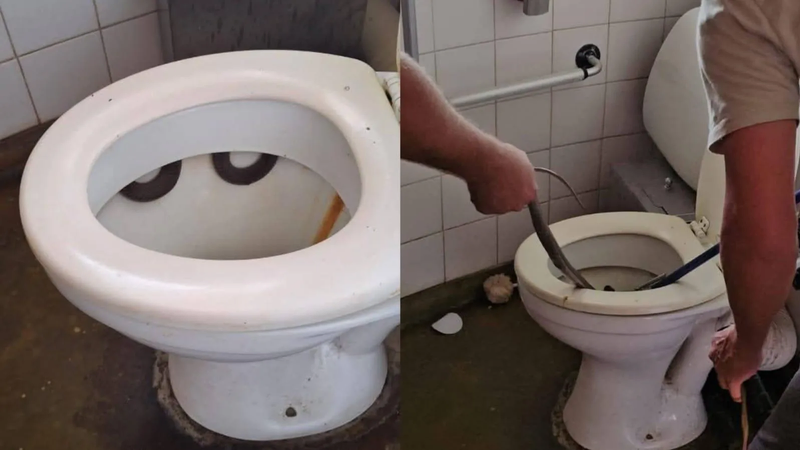A shocking discovery at Kruger National Park’s Masorini Picnic Site has left visitors on edge—a highly venomous Mozambique spitting cobra was found lurking inside a toilet bowl. The unexpected encounter led to a swift response from park rangers and expert snake handlers, ensuring the safety of both the public and the reptile.
The ordeal began when a visitor spotted the snake in the ladies’ restroom and quickly reported it to park authorities. The Phalaborwa Section Ranger wasted no time in alerting the Phalaborwa Snake Club, a local group specializing in reptile rescues. As luck would have it, the team was already nearby at Sable Dam, allowing them to respond immediately.
Upon arrival, the experts identified the snake as a Mozambique spitting cobra (Naja mossambica), a species notorious for its highly potent venom and ability to spit with remarkable accuracy. Measuring around 1.2 meters in length, the snake had wedged itself into the toilet’s rim, making removal particularly challenging.
With precision and care, the team deployed a portable endoscopy camera to locate the cobra’s exact position before carefully dismantling the toilet to extract it. The operation was a success, with the snake being safely removed and later released back into the wild.
This species is one of Africa’s most dangerous cobras, capable of spitting venom up to three meters to immobilize threats. Its venom, a potent mix of neurotoxins and cytotoxins, can cause paralysis, severe pain, and, if it makes contact with human eyes, temporary or permanent blindness.
Mozambique spitting cobras are known for their defensive nature, striking or spitting when they feel cornered. Bites from this snake can lead to necrosis, requiring urgent medical attention to prevent long-term damage or fatal complications.
Experts explain that snakes often seek out dark, cool, and humid spaces, especially in extreme heat. A toilet bowl provides an ideal refuge due to its moisture and relative seclusion. It is believed that the cobra may have been drawn to the area by an accessible water source or small prey like frogs.
Following the incident, South African National Parks (SANParks) has urged visitors to be extra cautious, advising them to check their surroundings, particularly in restrooms and accommodations within the park. While the situation was resolved without injury, the presence of such a dangerous snake in a frequently used facility serves as a stark reminder of the unpredictable nature of the wild.
Thanks to the quick thinking of Kruger National Park’s rangers and the expertise of the Phalaborwa Snake Club, what could have been a dangerous encounter was managed safely, ensuring both human and reptilian lives were protected.
